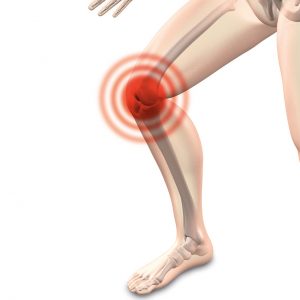What is Low Back Pain?
Low back pain physiotherapy is one of the most commonly sought out treatments. More specifically, low back pain can be very debilitating. Consequently, people want to find ways to help manage their symptoms so that they can return to their usual lifestyles.

- Research says several reasons have been identified as possible causes of low back pain. For example:
- Sedentary life-style
- Industrial work
- Poor posture
- Depression
- High body mass index
- Poor ergonomics at work
- More specifically, 60-70% of people are suffering from mechanical low back pain.
- Importantly, it is important to realize that low back pain is a condition and not a disease. Therefore, the exact cause of the pain is often difficult to chase. However, despite this, physiotherapy treatment for mechanical low back pain is very effective.
What is a low back sprain/strain?
Low back strain/sprain can happen suddenly or with doing repetitive movements overtime. More specifically, sprains and strains of the low back involve ligaments and muscles, respectively.
- Ligaments are connective tissues in the body that connect bones together. Therefore, a sprain to one of the ligaments leads to instability in the low back and produces pain with certain movements.
- On the other hand, strains involve muscles and can happen with overuse or overloading with various activities.
- Commonly, sprains and strains are caused by:
- Poor posture
- Repetitive heavy lifting at work or gym.
- Poor recruitment of muscle fibers.
- High velocity sports involving sudden twists and/or large impacts.
Sign and symptoms of low back sprains/ strains:
- Swelling and redness around affected the area
- Pain
- Bruising
- Muscle spasm
- Muscle weakness
- A knotted-up/ locked-up feeling in the back
- Soreness
What does low back pain physiotherapy for sprains/strains include?
- In most cases, low back pain physiotherapy for strains/sprains has a high success rate
- Additionally, it does not only treat current symptoms but also helps make muscles stronger so that it prevents a reoccurrence.
- Specifically, physiotherapy treatment can include several different types of treatment options to address these injuries.
IFC and Ultrasound modalities:
- IFC is an electrical modality and has been found helpful in relaxing the muscles of the low back.
- More specifically, it works best when it is combined with a heat pack or ice pack.
- On the other hand, ultrasound helps to reduce swelling from the affected area. There this helps free up some space for muscles and ligaments to move.
Soft-Tissue Release:
Soft tissue release helps with:
- relaxing tight muscles
- reducing swelling
- improving circulation
- improving range of motion
- releasing endorphins, which helps lessen the pain signals in the nervous system
Therapeutic Exercise:
- Early movement is important for enhancing healing of any injury.
- Your physiotherapist will prescribe specific exercises that are targeted toward your specific injury.
- Furthermore, once the pain is better, then more muscle recruitment and strengthening exercises will be prescribed to prevent future injuries.
Mobilization:
Mobilizations of the spinal joints will increase the rate of recovery by improving the movement in the back.
How can low back pain physiotherapy help with a Herniated disc?
- Between each vertebra there is a jelly-like structure with a hard outer crust
- If there is a break in the crust, the jelly material inside can sometimes leak out and put pressure on the nerves that supply the lower legs
- This pressure on the nerve can cause severe pain, pins and needles, numbness and weakness in the legs
Common causes of disc herniations
- Poor posture
- Scoliosis
- Repetitive bending and lifting activities
- Sudden excessive load on back
- Excessive overhead activities like painting, electricians, etc.
Signs and symptoms of disc herniations:
- Tingling and numbness down the leg
- Pain in low back
- Difficulty in sitting, standing, lying or changing positions.
- Pins and needle sensation
- Weakness in back and legs
What type of low back pain physiotherapy helps with a disc herniation?
Physiotherapy plays an important role in the treatment of herniated discs. Consequently, the main goal is to reduce or abolish the pressure on the discs and affected nerve and improve mobility and function.
Extension exercises:
- There are specific exercises that will help with the recovery of a disc herniation.
- More specifically, back extension exercises have been shown to be very successful in the treatment of disc herniations.
- Certainly, your physiotherapist will explain the proper technique for these extension exercises and will make the appropriate modifications to make the exercises most effective.
Lifestyle Modification:
- Certainly, proper posture and ergonomics at work and home are important factors in the management of disc herniations.
- Consequently, avoiding prolonged postures and incorporating more movement into the daily routine are key in preventing flare ups and future episodes of pain.
- More specifically, your physiotherapist will be able to advise you on what type of lifestyle changes will be beneficial for you.
General strengthening and stretching exercises:
- Certainly, it is important to maintain a balance between tight and weak muscles
- More specifically, strengthening for the core, glutes and low back muscles should be included in the treatment to help support the injured disc.
Posture correction:
- Proper sitting and standing posture are important in the management of disc herniations.
- Importantly, your physiotherapist will educate you on the best postures for recovery and maintenance.
- Furthermore, they will also instruct you on the proper usage of a lumber roll, which helps you maintain a more neutral back when sitting.
- Additionally, your physiotherapist may recommend that you invest in a standing desk to help with positioning if you are working from home.
What is Spinal stenosis?
- Specifically, narrowing of the spinal canal is called spinal stenosis.
- Furthermore these changes of the canal can produce pressure on spinal cord or on the nerves branching from it.
- Certainly, most patients with mild spinal stenosis will not have any symptoms.
- However, moderate to severe stenosis can result in many symptoms.
Causes of spinal stenosis:
- Degenerative changes in spine.
- Osteoarthritis of vertebra
- Disc herniation
- Trauma to the back
- Tumours
- Bone spurs or overgrowth of the vertebra
Signs and symptoms of Spinal Stenosis:
- Tingling and numbness in the leg and feet
- Weakness in the legs and/or feet
- Balance disturbances
- Difficulty with prolonged standing or walking
- Importantly, in severe cases, there can be bowel and bladder disturbances
Low back pain physiotherapy for spinal stenosis:
Specifically, the aim of physiotherapy is to open up the joint spaces in the spine. Therefore, there will be less pressure on the nerve and spinal cord. Consequently, this should help improve your symptoms.
Decompression Treatment:
- Importantly, decompression through manual or mechanical traction will help in opening up the joint spaces in between vertebra.
- More specifically, mechanical traction involves the use of a machine that stretches the spine using a weight specified by the physiotherapist.
Flexion based exercise:
- Firstly, flexion movements involve bending of the spine and they help open up the joint spaces.
- Secondly, these exercises combined with decompression treatments helps to manage symptoms of spinal stenosis.
Posture and lifestyle modification:
- Importantly, maintaining appropriate postures and ergonomics will help manage symptoms.
- Certainly, your physiotherapist will go through what type of postures and changes are best for spinal stenosis.
In conclusion, these are some of the most common reasons for low back pain. Consequently, these conditions are very responsive to to physiotherapy treatment and the majority of people have a positive outcome. Therefore, don’t let low back pain stop you from living your life. Call PhysioNow today to book your appointment for your low back pain!


 affects the use of your hand. It is caused by pressure on the median nerve in the carpal tunnel of the
affects the use of your hand. It is caused by pressure on the median nerve in the carpal tunnel of the 
 Physiotherapy for ankle sprains is an important part of recovery. There are many different types of
Physiotherapy for ankle sprains is an important part of recovery. There are many different types of  What causes knee pain?
What causes knee pain?

